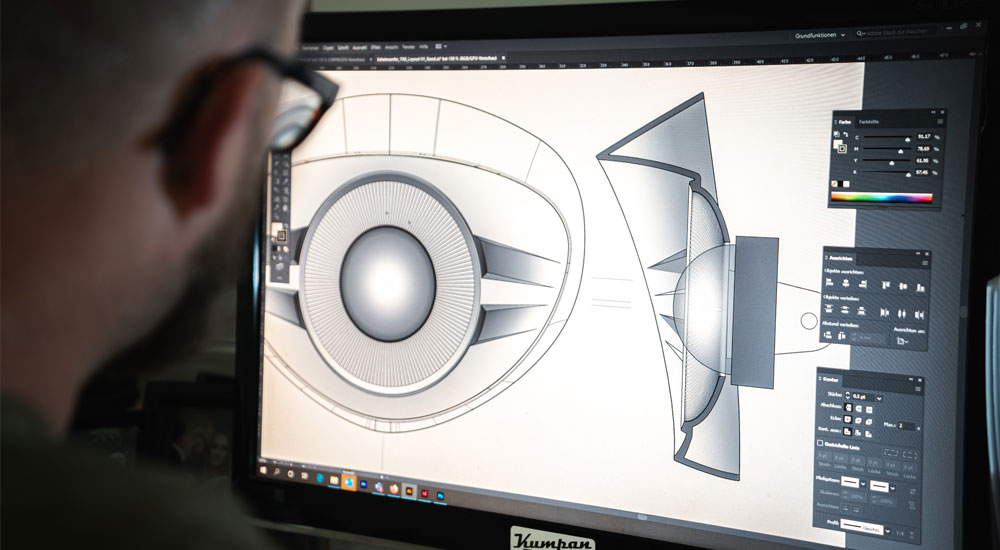Improve Design Documentation With These Tips And Tricks
Design documentation is a collection of written and visual materials describing a project or a product’s design, features, process, decisions, and outcomes. It includes design goals, user requirements, specifications, and solutions. Design documentation can take many forms, including sketches, diagrams, wireframes, prototypes, design briefs, reports, and user manuals.
Design documentation serves as a guide for designers, developers, stakeholders, and other project team members and a means of communicating the design objective. It directs project team members such as designers, developers, and stakeholders. It can also be utilized for future reference and advancements as a record of the design process. Therefore, design documentation is a crucial step in every design process.
Tips And Tricks To Improve Design Documentation
The quality of design documentation plays a vital role in the success of a project. Clear and concise documentation ensures everyone is on the same page and reduces the risk of errors and misunderstandings. To expand more, below are some tips and tricks to improve design documentation.
- Maximize The Use Of Digital Tools
A digital tool like a signature generator can help improve design documentation by providing a way to quickly and easily add signatures to documents. In addition, it aids in time savings, accuracy improvement, security enhancement, accessibility improvement, and record-keeping improvement. A signature generator may speed up the design process and guarantee that design papers are accurate, secure, and available to all team members by offering an easy and safe way to append signatures.
- Use Simple And Clear Language
Simplifying the language used in documentation is crucial to ensure that all team members can comprehend it. Avoiding technical jargon and complex terms unfamiliar to some team members is advisable. Instead, opt for concise and easy-to-understand language. Short sentences should be utilized, and ambiguous or vague language, which could confuse, should be avoided.
- Add Visuals
By precisely reflecting on the design and communicating complex ideas and procedures more effectively than words alone, visuals can increase the effectiveness of design documentation. Use wireframes, flowcharts, and diagrams to help explain the design. Utilize prototypes, mockups, or screenshots to demonstrate the design. Visuals can lower the possibility of misconceptions and aid team members in comprehending the project or product design.
- Provide Context
For team members to grasp the design’s goal and how it fits into the larger project, the context in design documentation is crucial. Describe the project’s history, the design objectives, and the target market. This can ensure that the design is functional for the target audience and in line with the project’s goals.
- Organize The Documentation
Organizing the documentation logically and efficiently can make it easier for team members to read and understand it. Divide the document into sections and sub-sections, and use headings, bullet points, and numbered lists to make it easier to read. Use consistent formatting and labeling to make the documentation more organized and structured.
- Provide Examples
Including design and examples can enhance team members’ comprehension of the documentation. Visual design examples such as screenshots, mockups, or prototypes can be utilized to achieve this. Doing so gives team members a better mental image of the design and provides a more precise depiction of what is conveyed in the documentation.
- Review And Update Regularly
The design documentation may be kept accurate and up to date with any changes to the design by routinely reviewing and updating it. Frequent evaluations can assist in finding any contradictions or mistakes in the documentation. Ensure that all team members in the project check the documentation to ensure everyone is on the same page. Any modifications to the project’s aims or design should be reflected in the documentation as needed.
- Incorporating Feedback
Collaboration should be an integral part of the design documentation process, with input from stakeholders and end-users. Such feedback can help identify areas for improvement and ensure that the documentation adequately meets the needs and requirements of the intended audience.
- Using Collaboration Tools
One way to improve design documentation is to adapt the use of collaboration tools. These tools can aid in fostering communication and collaboration among team members during the development and revision of design documentation. These also allow for real-time collaboration, feedback sharing, and change monitoring, thus promoting teamwork.
- Double Check The Content
The design documentation should contain all the details necessary to explain the design process, choices, and results to the appropriate stakeholders. The following essential components must be present in design documentation:
- Project Overview: A summary of the project goals, objectives, scope, and timelines.
- User Personas: Detailed descriptions of the target users of the product or service, including their goals, needs, behaviors, and pain points.
- Design Brief: A comprehensive document that outlines the design problem, research findings, design solution, and design rationale.
- Sketches and Wireframes: Sketches and wireframes of the design solution, including rough drawings of the design elements, layout, and user flows.
- Visual Design: The final visual design of the product, including color schemes, typography, icons, images, and other visual elements.
- Interactive Prototypes: Interactive prototypes allow stakeholders to experience the design solution in action and provide feedback on its functionality and usability.
- Technical Specifications: Technical specifications of the design solution, including software and hardware requirements, coding standards, and testing protocols.
- Design Style Guide: A document that specifies the design standards and guidelines for the product, including typography, color schemes, iconography, and other visual components.
By following these tips and tricks, designers can create documentation that is easy to understand, accurate, and up-to-date. Offering a roadmap for designers, developers, stakeholders, and other project team members can assist assure the success of their initiatives.

Design Documentation Structure
The structure of design documentation can vary depending on the project and the specific needs of stakeholders and team members. However, as mentioned above, it should be organized clearly and logically, with headings and subheadings to break up the content and make it easier to navigate. Here are some tips on how to structure design documentation:
- Use Headings And Subheadings
Large blocks of text can be effectively broken up with headers and subheadings to make the content easier to scan. This can make it easier for readers to navigate the document and quickly find the necessary information. Use language that clearly and succinctly conveys the substance of each part when generating headings and subheadings.
- Provide An Overview
An overview of the design project is necessary to provide context for readers and aid them in comprehending the paper’s aim. Goals, specs, and needs for the design project should all be included here. By having this information up front, readers will be better able to comprehend the design’s rationale and how it fits into the overall scheme of the project.
- Organize Content Logically
Organizing the document’s content logically is essential to help readers follow the thought process behind the design and understand how different aspects of the design fit together. Start with high-level information and move towards more specific details. This can help readers understand the structure more efficiently and identify areas of improvement.
- Consider The Audience
When structuring the document, it is vital to consider the audience’s needs. For example, the document is intended for developers. In that case, it should include technical specifications and code examples. If it’s designed for non-technical stakeholders, it should use less technical language and provide more context. Consider the audience’s familiarity with the design project and adjust the language and structure accordingly.
- Provide A Conclusion
Providing a conclusion summarizing the document’s key points and reinforcing the design’s goals and requirements is essential to help readers understand the importance of the design and the next steps in the development process. The conclusion should tie together the document’s various sections and provide readers with a clear call to action. It should be clear and concise, highlighting the most critical takeaways from the document.
Importance Of Design Documentation
Design documentation plays a vital role in the design process by thoroughly accounting for the design decisions and their rationale. Here are some reasons why design documentation is necessary:
- Clarity And Communication
Design documentation provides the aims, demands, and specifications of the design project outlined clearly and concisely. This makes it easier to guarantee that every team member knows the project’s goals and scope. Design documentation fosters efficient communication and cooperation by providing a standard reference point for all team members.
- Facilitating Collaboration
Design documentation provides a common reference point for team members to collaborate and coordinate their efforts. It can help reduce misunderstandings and ensure everyone works towards the same goals. By documenting design decisions and their rationale, design documentation can also help identify and resolve conflicts or opinions between team members.
- Managing Expectations
The design documentation effectively manages stakeholders’ and clients’ expectations by defining the project’s scope, timeline, and deliverables. It can also promote better comprehension among stakeholders and clients regarding the project’s expectations by outlining what the project will deliver and when it will be provided. Additionally, it can help manage project changes by providing a record of previous decisions and their impacts, allowing stakeholders and clients to make informed decisions about proposed changes.
- Evaluation And Improvement
The design documentation can evaluate the design project’s effectiveness and identify improvement areas. Recording design decisions and their rationale can help determine what worked well and what did not and inform future design projects. Design documentation can also provide insight into the design process, allowing for continuous improvement of the design process itself.
- Legal Protection
By identifying the intellectual property and owners of the design project, design documentation can act as a legal document or protection. Design documentation can prove ownership and offer protection from intellectual property issues by capturing the design process and conclusions. Moreover, design documentation can provide proof of adherence to industry standards and legal obligations, reducing the risk of legal liability.
Conclusion
Design documentation plays a critical role in the success of a project by providing a clear and comprehensive record of the design process. With well-crafted and visually appealing design documentation, designers can communicate their ideas efficiently and collaborate effectively with their team members. Additionally, design documentation is a valuable reference point for future projects, streamlining the design process and enhancing overall work quality. All these make design documentation an essential aspect of the design process.

Recent Comments